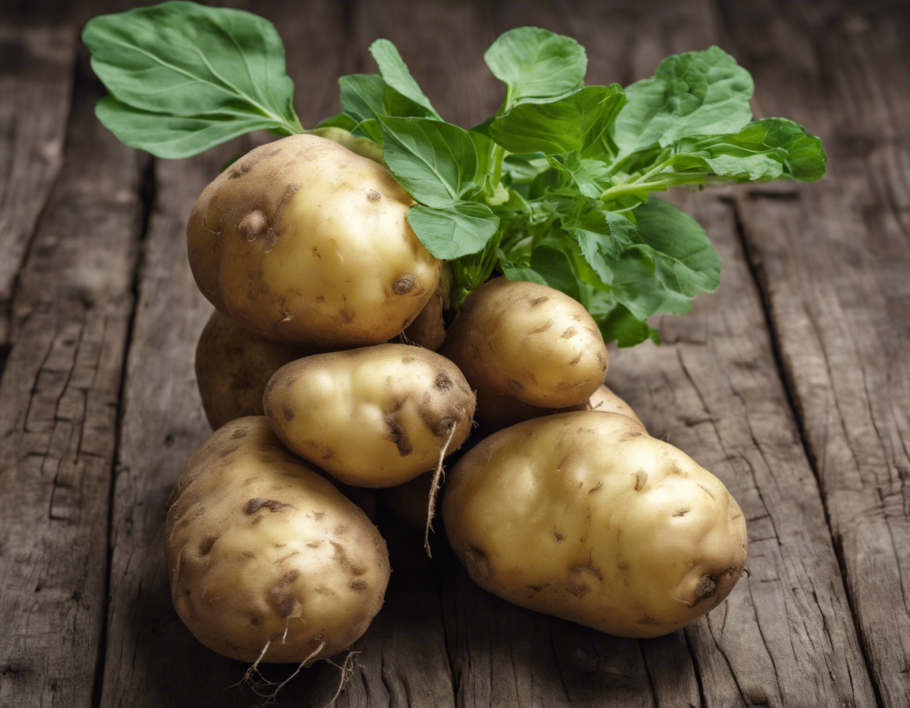When it comes to the botanical classification of a potato, it often sparks a debate among individuals as to whether it is a stem or a root. To unravel this mystery, a closer look at the anatomy and growth characteristics of a potato plant is warranted.
Anatomy of a Potato Plant
- Stems: The central part of a potato plant that emerges above the ground is called a stem. This stem is photosynthetic and plays a crucial role in the process of photosynthesis, converting sunlight into energy.
- Roots: The roots of a potato plant are underground structures that primarily serve to anchor the plant into the soil. Roots also absorb water and nutrients from the soil to support the plant’s growth.
- Tubers: Potatoes themselves are actually modified stems known as tubers. These swollen underground structures store nutrients and energy for the plant to utilize during periods of growth or dormancy.
Growth and Development of Potatoes
- Seed Potato: The growth cycle of a potato plant begins with a seed potato, which is a tuber saved from the previous harvest.
- Sprouting: When a seed potato is planted in soil, it develops “eyes” or buds that sprout and give rise to new potato plants.
- Underground Growth: As the potato plant grows, it produces stolons, which are horizontal stems that elongate underground. Tubers develop along these stolons.
- Harvest: Once the tubers have reached an optimal size, the potato plant is ready to be harvested, and the tubers are collected for consumption.
Why Potatoes are Considered Stems
- Photosynthetic Activity: The fact that the above-ground stems of a potato plant are photosynthetic is a key argument for considering potatoes as stems. Roots do not possess this ability.
- Tuber Formation: The tubers of a potato plant, which are the edible parts we commonly consume, are stem structures modified for storage. Roots do not typically store nutrients in this manner.
Why Potatoes are Often Confused as Roots
- Underground Growth: Since we primarily encounter potatoes as underground tubers, it is easy to mistake them for roots. The underground nature of tubers can lead to their misclassification as roots.
- Nutrient Absorption: Potatoes rely on their root system for water and nutrient uptake, a characteristic typically associated with roots.
Conclusion
In conclusion, while potatoes exhibit characteristics of both stems and roots, they are more accurately classified as stems due to their photosynthetic activity and the nature of tuber formation. This unique botanical feature makes potatoes a fascinating and versatile plant with significant agricultural and culinary importance. So, the next time you enjoy a plate of delicious mashed potatoes or crispy fries, remember that you are savoring the modified stems of a remarkable plant.
Frequently Asked Questions (FAQs) About Potatoes
-
Q: Can you eat potato stems and leaves?
A: While potato tubers are safe for consumption, potato stems and leaves contain toxic compounds called glycoalkaloids and are not fit for human consumption. -
Q: How should potatoes be stored to prevent sprouting?
A: To prevent potatoes from sprouting, store them in a cool, dark, and well-ventilated place. Keep them away from light and moisture to prolong their shelf life. -
Q: Are sweet potatoes botanical relatives of regular potatoes?
A: Sweet potatoes belong to a different botanical family than regular potatoes. They are root vegetables and not related to the stem structure of common potatoes. -
Q: Are green potatoes safe to eat?
A: Green potatoes contain high levels of solanine, a toxic compound. It is advisable to avoid consuming green potatoes or any parts that have turned green. -
Q: Can you plant any potato to grow a potato plant?
A: While it is possible to plant store-bought potatoes, it is recommended to use certified seed potatoes for better growth and disease prevention.
By exploring the unique characteristics and growth patterns of potatoes, we gain a deeper appreciation for this versatile and nutritious vegetable that plays a significant role in various cuisines worldwide.

